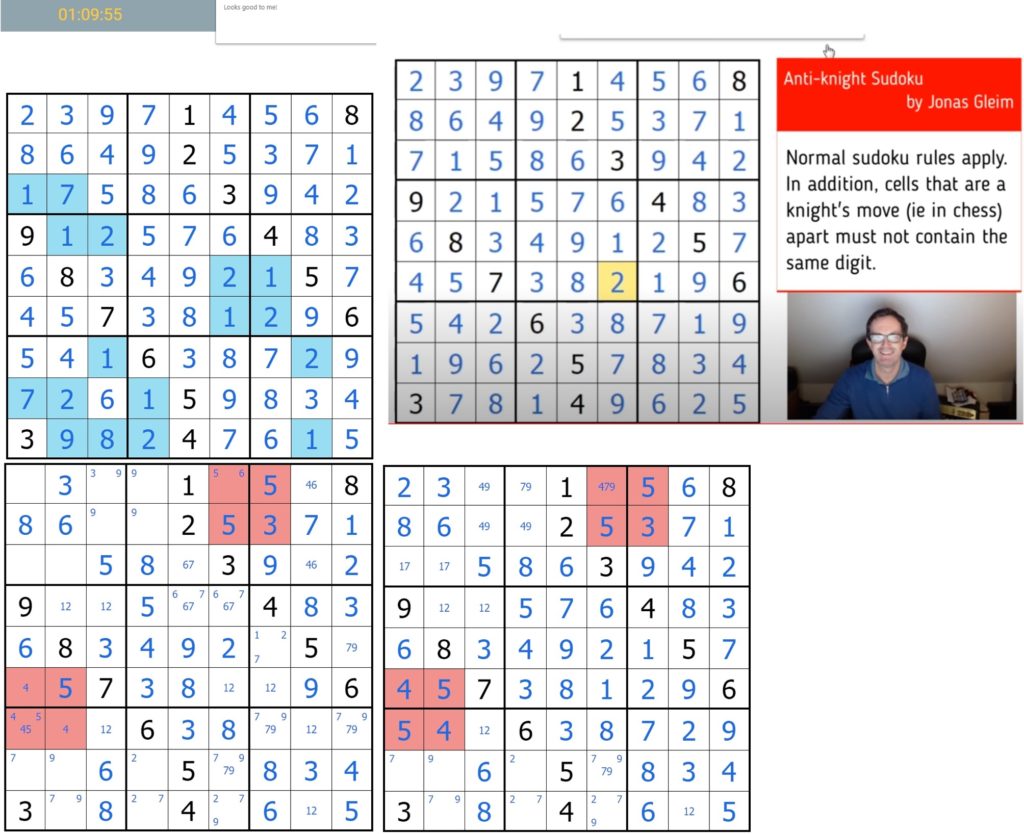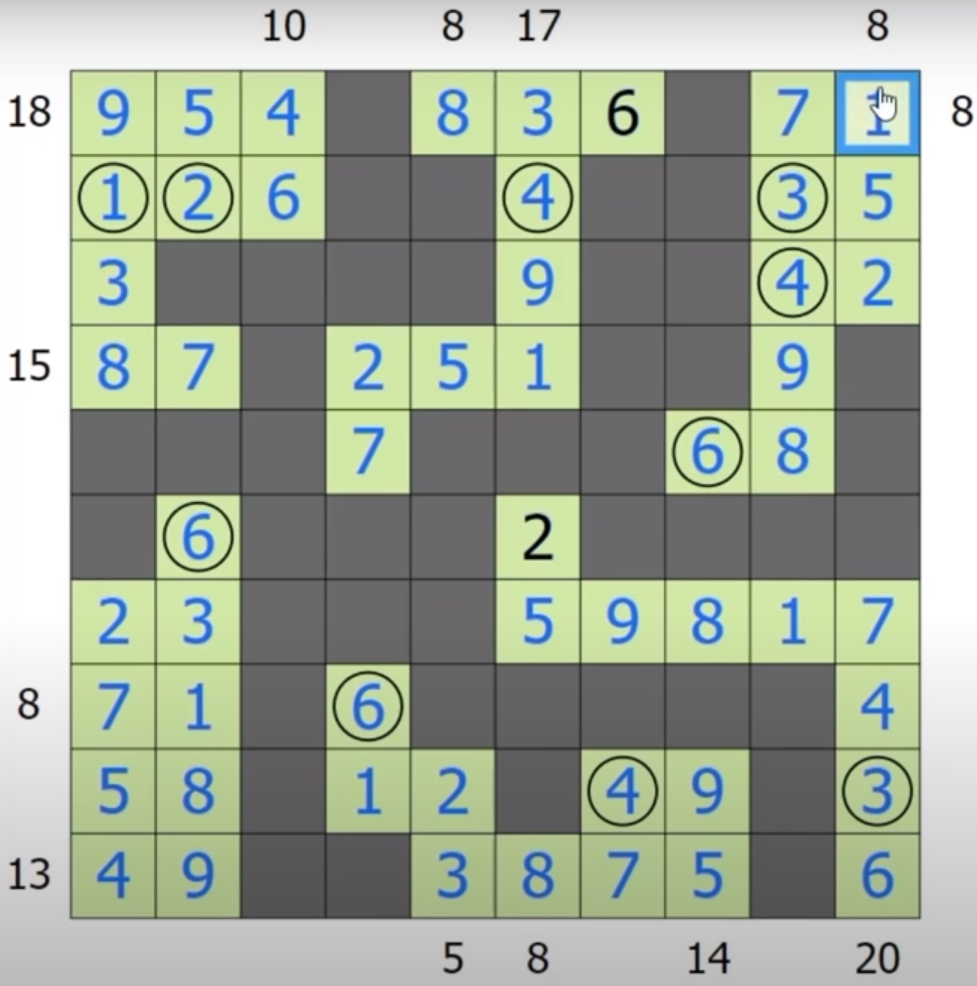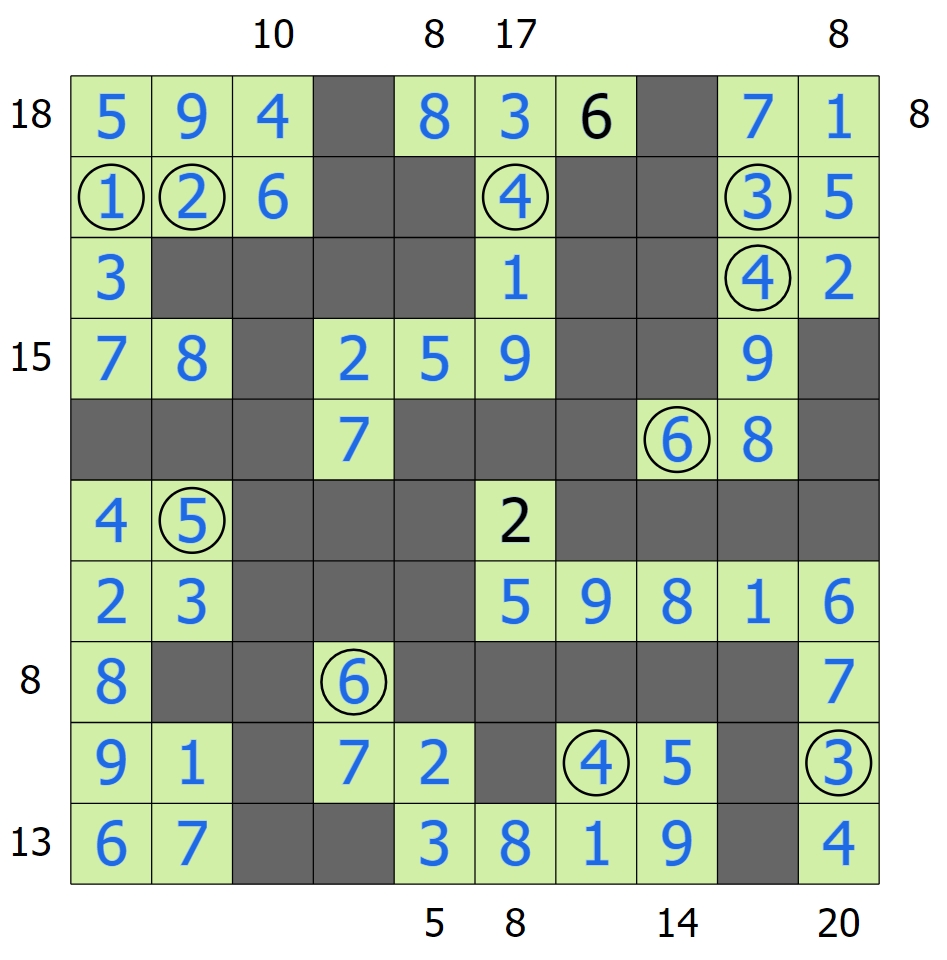In this post I share an experience getting a Sudoku puzzle right by the rules, but not the correct or expected answer. It’s an interesting situation which the boffins should be thinking twice about, methinks. Nothing personal here, guys! Promise.

One of my recent challenges has been to tackle advanced Sudoku puzzles. I love the logic required to solve them although I can get a little frustrated with complexity and don’t pay the requisite attention to detail when I’ve appeared to have broken the back of a solve.
I’ve been checking out some online Sudoku boffins, most recently Simon from Cracking the Cryptic has helped me enormously with his guidance and advice. He’s a Brit, and with his elegant “pommy” language I find him a real crack-up but he’s a ton smarter than me and runs a great service, Cracking the Cryptic.
His Youtube Channel (https://www.youtube.com/watch?v=lVkMWm2I7SE) appears to be safe for the moment as he doesn’t ping the Deep State or challenge the COVID narrative. This historical solve from January 2020 can be located here: https://cracking-the-cryptic.web.app/sudoku/FLFpq4pMH3. The puzzle author is Jonas Gleim.
Sudoku authors give us a few hints and the rules to solve them are pretty standard. Each row and column needs to contain one set of the numbers from 1-9 and this puzzle adds what they call an “anti-knight rule” whereby any number cannot be the same on a square a knight’s move away from it. Thus If there is a 2 in R1C1, then the squares R2C3 and R3C2 cannot contain a 2. In this example the correct answers in these prohibited squares are a 4 & a 7, thus they comply. We use this rule to help us solve the puzzle.
While learning the various logic techniques, I will often play along with Simon as he completes a solve. My usual process is to charge in there and get my teeth into it doing the best I can, then when I get stumped I will watch him until his video has caught up to me. I will fix my mistakes, learn from him as I watch him work through scanning the puzzle and explaining his logic, then when I get through to the completion phase, I will usually leave him and his solution, then complete the puzzle myself, alone, click the check button and sometimes watch him power through to complete it.
I have found this to be a great way to learn the logic techniques and I truly do appreciate not only the service, but the man’s enthusiasm and talent. His partner Mark is too advanced and too fast for a beginner like me so I stayed with Simon most of the time.
One of the great things about Simon’s approach too is his lavish praise of his team of puzzle setters. He has a growing bunch of boffins developing for him and the channel, which his commentary is very supportive of and educational.
One of the goals of a good puzzle is to provide a puzzle that only has one solution. The problem is that if a puzzle has more than one solution (like this one) then you can fail in your logic and still get a solution that is correct. In my example here, there are seventeen ‘wrong’ digits but the answer is still right, even though I’ve screwed up somewhere along the way. In this regard Jonas has failed, but as I said this is nothing personal.
It reminds me though of the trauma I put the programmers through years ago, who regularly pulled their hair out when they sent me the precious results of their weekend’s labours on a Monday morning only to get bug reports as I tested it and I found bugs that they didn’t.
“WTF did you do to get that error?” they would often ask me. “I tested it for hours before I sent it to you!” they would often explain.
“So I just pressed ESC a couple of times!” I might reply. “Nobody would ever do that in real life? Why the *** did you do that?” they would often say.
“Well I just did, and I’ve broken it, so you better fix it and perhaps test it more next time” didn’t always go down well. The more experienced guys got used to it, tested it for a while then just sent it to me “to do the final de-bugging”, rather than trying to get it all 100% and pretending that they were hot shots.
It’s not that I’m smarter than these boffins, I am not, but I do try things out and just keep hitting things until they break. Must have driven my parents nuts as a child methinks, especially as my father was trained as a watchmaker!
In my solution you can see that a lot of my blue squares contain what we call a “1-2 pair” and that I appear to have gone off the rails when entering a two into R6C5 when it should have been a one. Normally this would break the puzzle but Jonas’ challenge here gave a correct answer no matter my error. Not good, but hey, I struggle to even answer these sorts of things, let alone set them, so all is cool. Hopefully these boys carry on their good work and they are happy to do this for a while yet.
Somebody really brainy could probably analyse my answer and work out if I did actually make a mistake or note whether perhaps the puzzle is at fault. Feel free to comment here if you do!
UPDATE 2 April 2022
I had a tentative go at a supposedly easy puzzle from CtC https://youtu.be/WDWRT9W1cXc?t=914 and bumbled my way through it to get the answer right but wrong! https://app.crackingthecryptic.com/sudoku/LjtD6LjLRF
Don’t you just hate it when you get knocked around like that?
So I’ve done it again and doubled checked my work this time but it seems that there is not a unique solution to this one . . .
Once again the brainy among you can help me understand my error = perhaps these things are not supposed to have unique solutions?


Both seem to check out OK


Jonas Gleim
@Dennis A Smith there is only one correct solution. Your “alternative solution” has two 2’s that see each other via a knight’s move in R8C2 and R9C4. Generally, if lots of people have solved a puzzle and found that it is not broken, then it is not broken and you have overlooked something. The answer checker in the app accepts other “solutions” because it doesn’t check variant rules, so any valid sudoku grid will be “correct”.
Ah I see and understand, thank you Jonas. A puzzle checker that checked the puzzle out and reported “OK” but did not check all the rules! A lesson learned. Perhaps Simon should update the checker or put in his checker a warning to this effect – the checker only checks Sudoku rules, not anti-knight rules? It was in January 2020 after all.